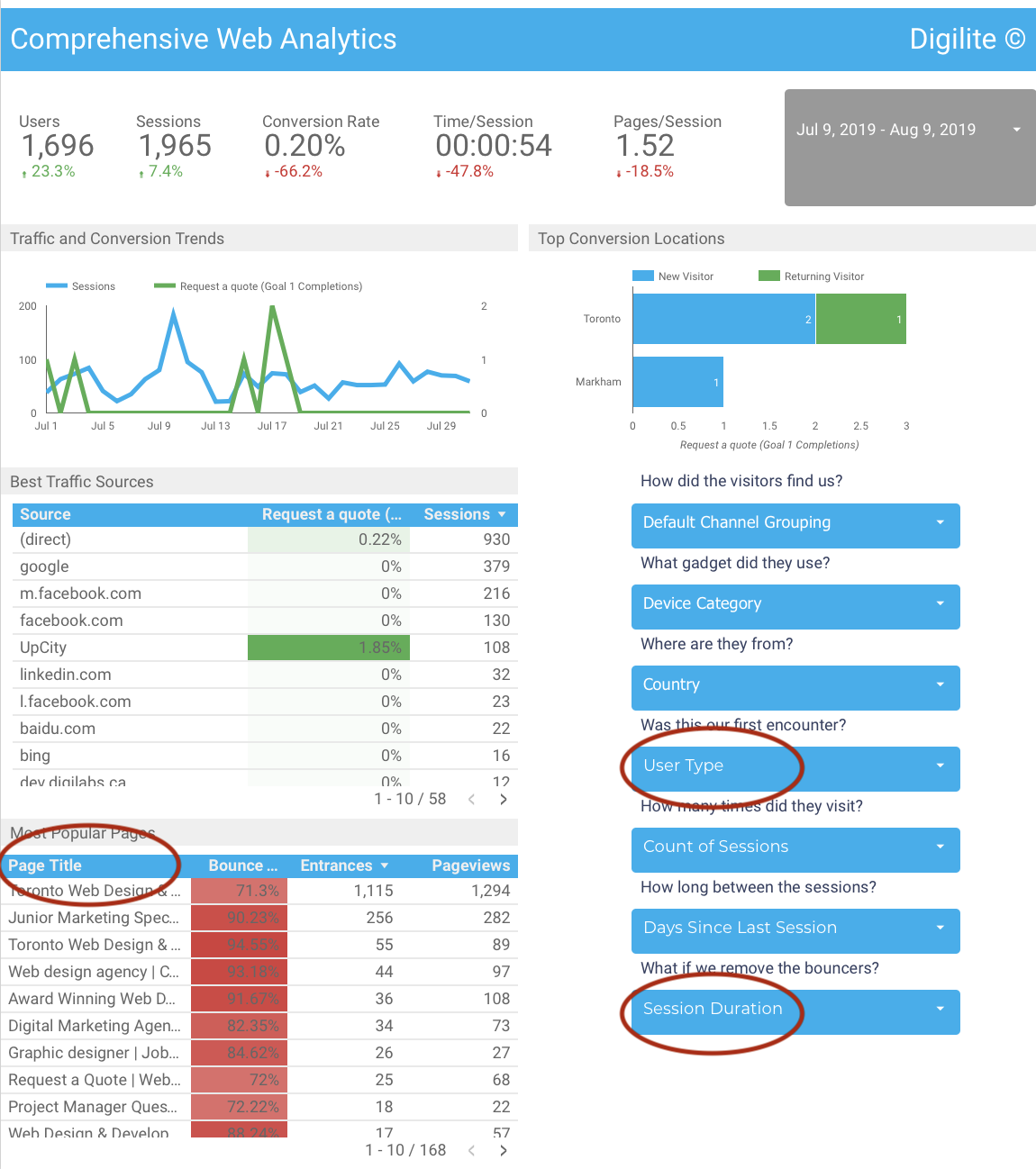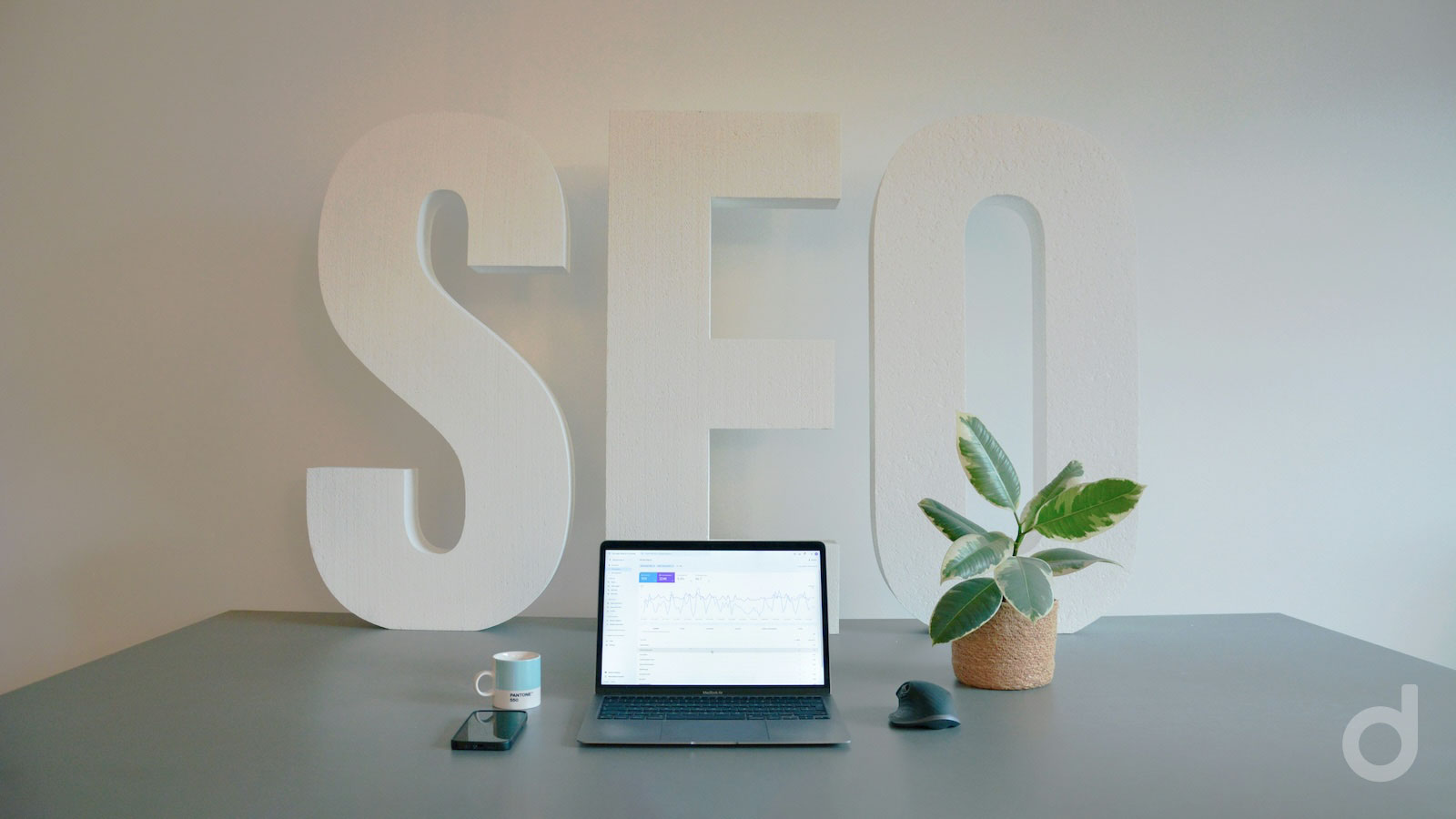A common SEO mistake that not only newbies but also many seasoned professionals and SEO agencies make is the failure to increase the efficiency of the efforts through prioritization and strategic choice of pages for optimization.
Let’s say you are to optimize the site of a web design agency.
Most likely, in line with all the essential “Services” pages, the site also has “About”, “Team Members”, “Partners” and several other pages.
Indeed these pages are must-haves for a decent agency, but they do not have much significance in terms of business value delivery. In other words, these pages are not likely to generate conversions, drive sales and be search terms that the prospects would use. On the other hand, the site most probably has pages that could be of utmost interest to potential clients, but have never been optimized before. On top of that, deeply buried in the portfolio and never updated after the creation, the site might have certain pages that showcase the agency’s expertise and competitive advantage in a niche industry and could possibly attract certain business clients operating in these industries. In all of these cases, it is important that the SEO specialist identifies these pages, prioritizes them, and directs the resources and efforts towards these pages.
Taking this into account, this time, I have prepared a step-by-step guide to help both SEO professionals and DIY entrepreneurs maximize their returns on investment. In the article we cover how you can combine business-centric thinking and Google Analytics insights to align your SEO strategy with the logic of ranking algorithms and send the right signals to the crawlers, while making sure that the site that you’re optimizing delivers value to its users, thus, rewards the business owners with enhanced sales.
Before crafting a strategy and getting into the action, let’s refresh our knowledge about the mechanics of search engines.
Google bots (and all other search engine bots) crawl and index the websites regularly (*Pro Tip 1: To see then Google has indexed your site, click on the green link part of the search results and choose “cached”). Not only do they index the homepages with the root domain name URLs but they crawl all the pages and index them with their unique URLs. In essence, the Google index is something like a huge excel sheet with all the world’s websites. So, when a user enters a search query in the search engine, it consults the “excel sheet”. It compares all the pages in the sheet according to certain criteria (these criteria comprise the backbone of the ranking algorithm). Then, it ranks these pages using an algorithm that essentially tries to measure the likelihood of satisfying the searcher’s information needs for each page. The pages are most likely to meet these needs to get top positions. So, at this point, it’s clear why when trying to optimize the site, it is important to consider the specifics of each page and be deliberate. After all, no business owner or an SEO specialist wants to lose time on optimizing pages that are not designed and likely to satisfy any search needs.
But how to choose value-driving pages on which to concentrate and how to know if these pages actually satisfy the criteria that search engines use and are likely to get visible position improvements in a brief period of time?
Let’s do it together in 3 steps!
1. Identify the pages that are important in terms of business value delivery
As with any marketing-related activity, in SEO to everything starts with understanding the business vision. As search engine marketing is more of an ongoing activity as opposed to paid campaigns, it is important to consider both short-term and long-term business needs. For this, look at the site that you’re optimizing and ask yourself the following questions. If you work with a client, make sure to validate your answers by talking to them.
- With which pages do the site owners earn money?
- Where do they want to grow in the long term?
First, the optimization of the pages that can give direct sales is most likely to meet the goals of the company. At the end of the day, all websites are created to deliver business value in one, or another form. On the other hand, from the searcher’s perspective, the shorter the path to getting what they want, the more likely they are to take an action (who has time to waste, huh?). Google’s user-centric algorithms are well-aware of this fact, hence, are more likely to rank high the pages that meet the immediate gratification bias inherent to all humans.
Second, long-term thinking always pays off. As said above, search engine optimization is a long-term activity. Imagine, the site owner wants to expand the service offers. New pages will be needed. On the other hand, the current pages that are somewhat related to new service offers and already have certain traffic will become more critical for establishing trust and relevance for the services to be offered. In this context, the choice of the pages should be directly related to
2. Use Google Analytics to narrow down the choice and prioritize the pages
- What does the site have that works well already?
- Which pages are not yet optimized at all?
- Which pages have competitive ease?
First, remember: the pages that have many visitors (a.k.a. traffic in GA) have higher rankings, the pages where visitors spend a long time (a.k.a time spent on landing pages in GA) have higher rankings, the pages that have many returning visitors have higher rankings (a.k.a returning visitors in GA). The audience of the chosen page should not be too small. Concentrating on what the site already does that works for its target audiences rather than trying to blindly improve the things that it fails to do well can deliver better results because user-centric search algorithms first reward you with top positions for what you do that work and only then go to “punishing” for what you do that does not work. Hence, the likelihood of improvements rises with competence-based strategic optimization.
Second, the optimization of the pages that have never been optimized previously can give a lot of improvement in a brief period of time. For instance, optimizing a non-optimized page with a general permalink will give you the best chances to grow in the rankings (Though, after changing the URL make sure to use 301 redirects).
Third, look for pages, where the site clearly showcases the owners’ competitive advantage. In other words, concentrate on pages that are unique in the sense that the competitive sites do not necessarily have pages similar to these. For instance, if you are working on the optimization of the website of a web design agency that has served many clients specialized in the financial sector, you might consider optimizing some portfolio pages that showcase their niche competence. After all, the businesses operating in these industries and searching for agencies might get specific with their queries and in these cases, the web agency will immediately stand out.
3. Iterate
I’m going to repeat this once again: SEO is an ongoing process. So, once you prioritize the pages, optimize them one after the other, and see the improvements in about a month, you should not settle – go back to the first step and start it all over again. After all, business needs change, search patterns alter, competition grows and websites get updated with new pages over time. Make sure to remain alert!
For instance, at Digilite we have created an interactive data studio report to facilitate both our monthly client reporting and continuous monitoring and analysis of the metrics mentioned in the article. The report allows filtering based on user types (new visitors vs. returning visitors), duration of the sessions, pages, and many more dimensions. Basing our decisions on solid data has never failed us.

Summing up, when choosing the pages for optimization, remember the following:
- The more direct conversion potential, the better.
- The more visitors, the better.
- The longer the visitors stay, the better.
- The more visitors return, the better.
- The less optimized, the better.
- The less competitive, the better
In my next article, I plan to write about improving your SEO efforts using the other free amazing tool that Google generously offers to SEO agencies, freelancers and entrepreneurs – that is, Search Console. Wait for some cool stuff!
(*Pro Tip 2: Spread publishing your content. The more often you post, the better)




